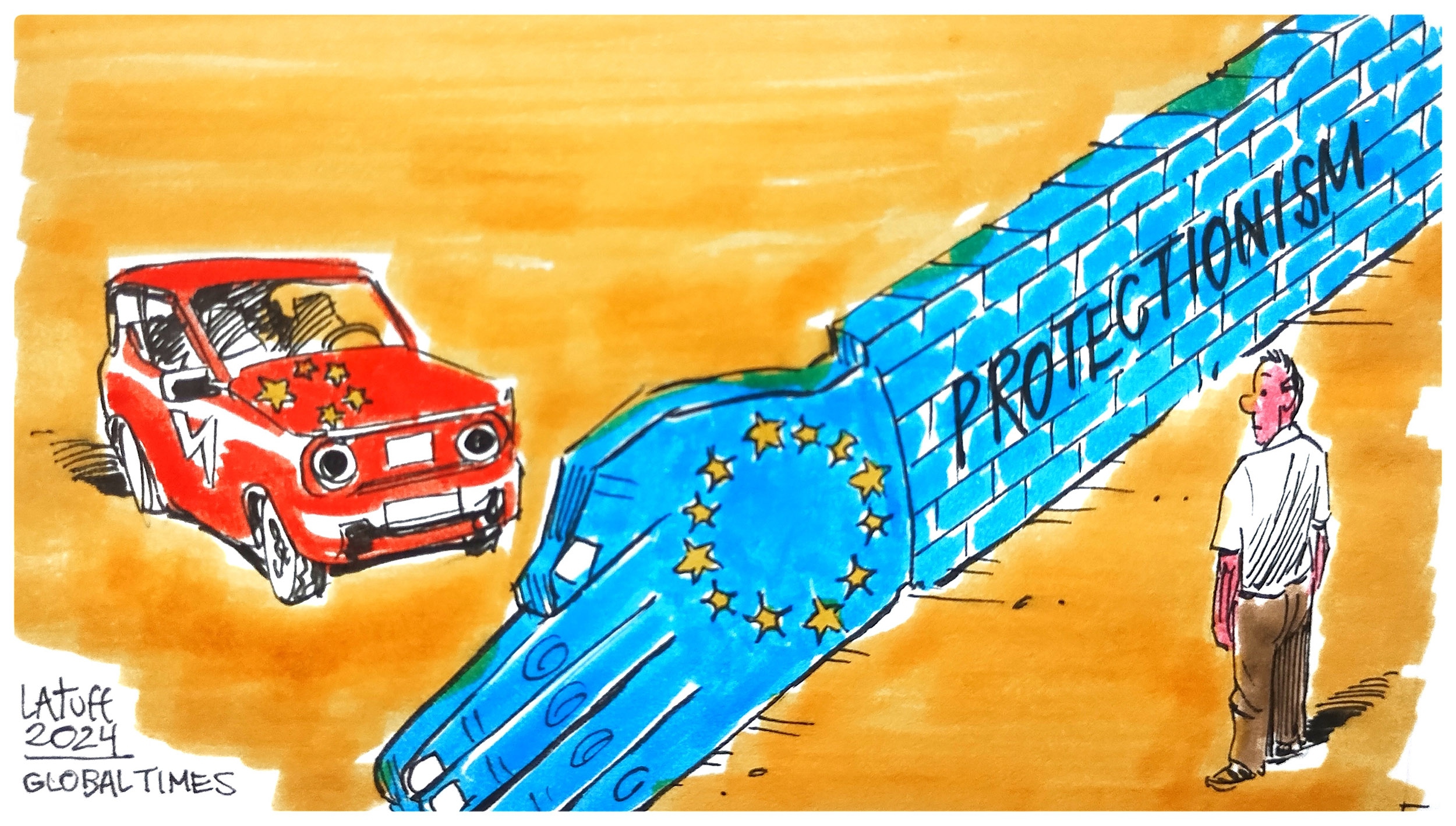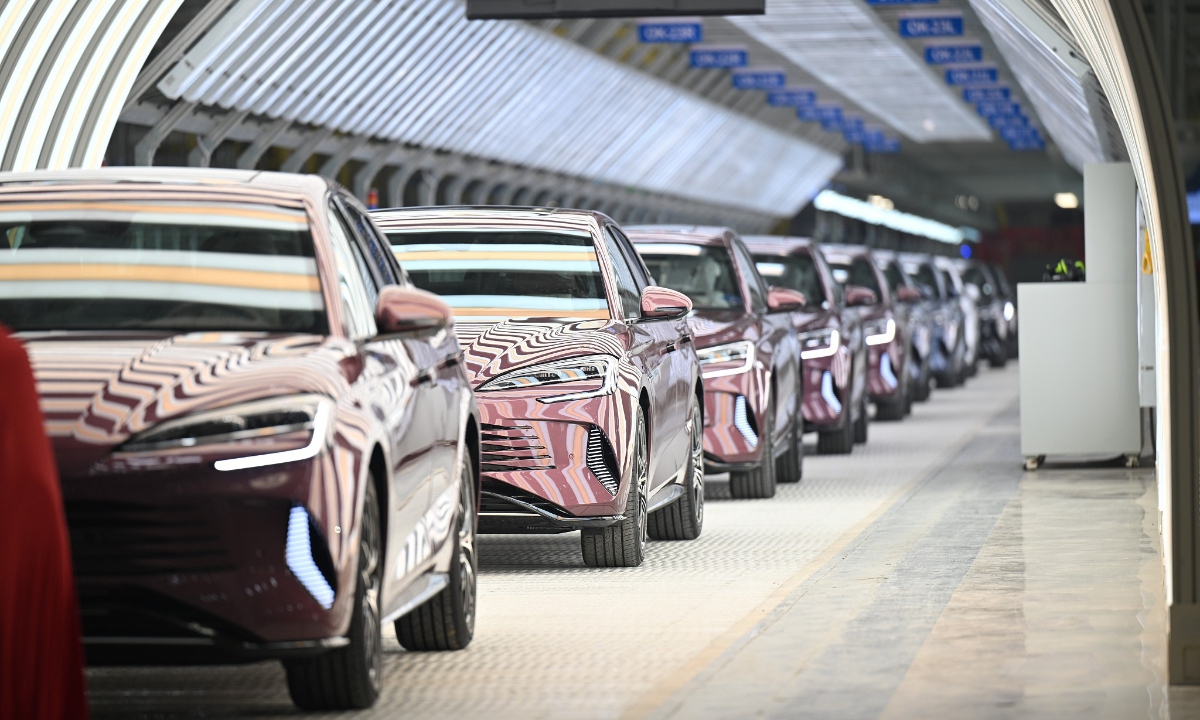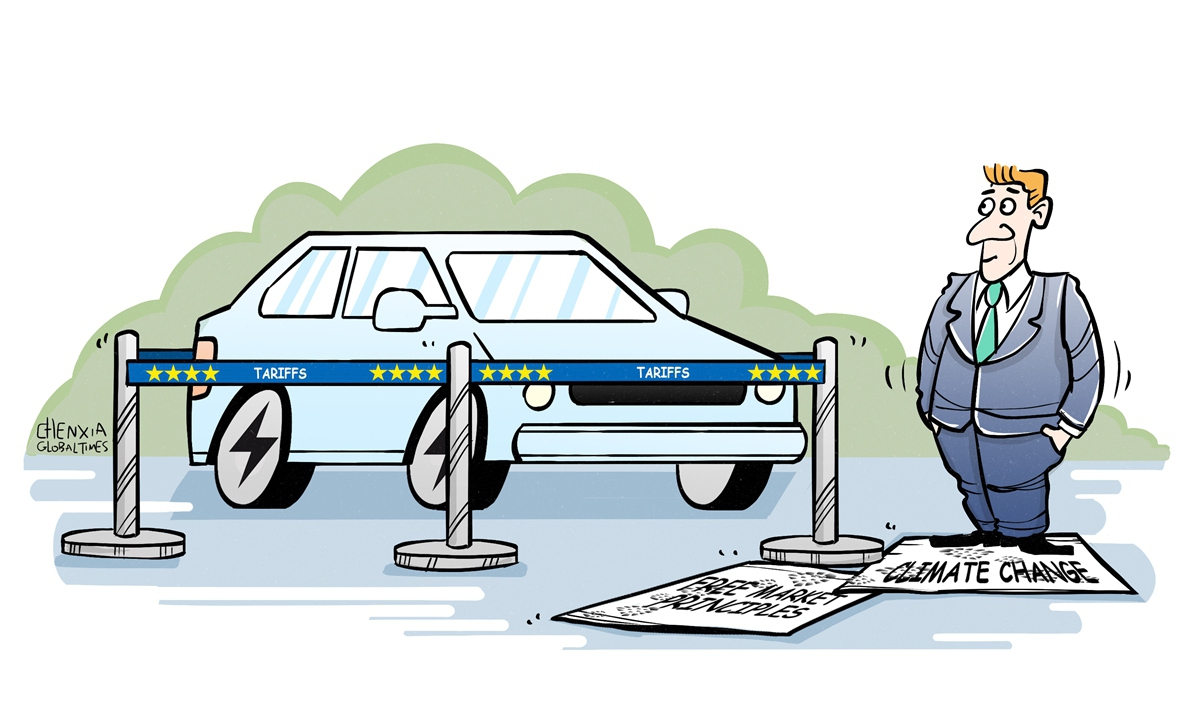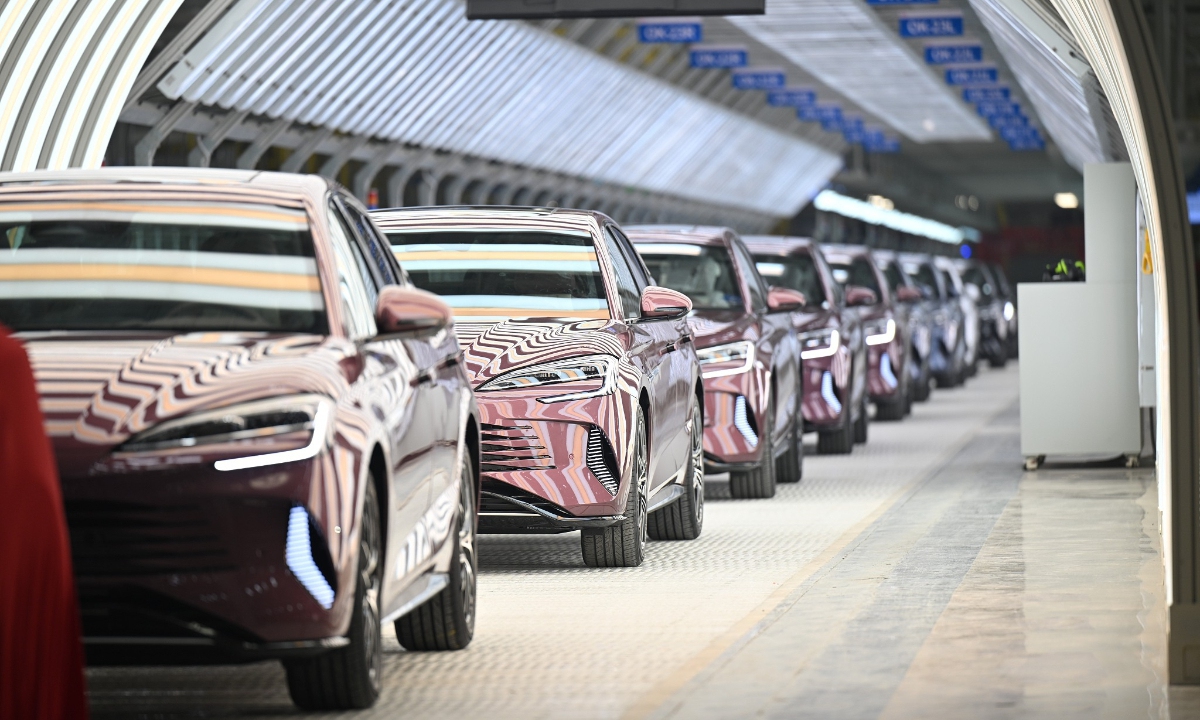COMMENTS / EXPERT ASSESSMENT
EU’s tariffs on Chinese EVs not helpful, cannot protect EU’s car industry

Cartoon: Carlos Latuff
The European Commission (EC) recently published a draft plan to impose up to 36.3 percent definitive countervailing duties on imports of Chinese electric vehicles (EVs), following the hostile action adopted by the US government-imposed 100 percent duty on Chinese EV imports.
They mainly target three companies, state-owned carmaker SAIC Motor Corp, facing 36.3 percent additional tariff on top of the existing 10 percent, Geely Automobile Holdings Ltd charged by 19.3 percent, and BYD Co hit by 17 percent. Other Chinese EV makers face an average duty of 21.3 percent, with a maximum of 36.3 percent for those deemed non-cooperative.
The EU and China remain in talks on the tariff dispute, and China also filed complains to WTO, the details have not yet been finalized and spillover effects may need some time to emerge.
The EU's intention is to protect the region's automobile manufacturers, especially well-paid workers, and pursue its own green agenda, particularly that the EU has announced initiatives to ban combustion engine vehicles by 2035.
However, there may be an unspoken strategy behind this tariff: the EU aims to prevent a repeat of the solar energy industry scenario, where Chinese companies displaced Western players from the leading position.
This tariff policy makes it hard to achieve these targets, and it might have unintended favorable effects on Chinese-branded EVs, and adverse effects to the bloc's push on combustion engine vehicle transformation. In June 2024, Chinese EVs grabbed 11.1 percent of EU's EV market, which was a record high number, targeting to circumvent EU tariffs to be placed in July 2024. Though the subsequent effects still need to be monitored, It has shown that the EU's mass market is eager for affordable EVs. Interestingly, the announcement of such tariff policy actually served to enhance the brand awareness for Chinese carmakers.
In contrast, EU's local EV manufacturers could not match the cost advantage of Chinese brands, which have already achieved economies of scale, and while also creating globally integrated supply chains. The tariffs would encourage Chinese leading manufacturers to build up local production factories in the Europe. Despite the tariffs that artificially increase prices, the appeal of Chinese EVs remains strong. As a result, European auto giants with limited options will either need to form partnerships or make space for these competitive rivals. This, ironically, is quite against the intention of this tariff policy's "protection."
Coupled with reduced subsidies for retail EV buyers in the EU, overall EV sales in Europe have begun to decline. For instance, in Germany, Europe's largest automobile market, EV registration number fell by 37 percent in July. Similarly, in Sweden, monthly EV sales decreased by 15 percent, according to media reports. These numbers point to the market gradually losing appetite for EVs, casting doubts over EU's ambition to ban the sales of combustion engine vehicle by 2035.
Taking these into consideration, in my opinion, the tariffs would hinder EU's own green ambition and delay the energy transformation speed. It may take some time for Chinese makers to build up local production bases, while EU's local automobile producers are still not competent to match up with low production costs of Chinese players.
The author is a Committee Member of Financing & Accounting Committee, Hong Kong Quality and Talent Migrants Association. bizopinion@globaltimes.com.cn



